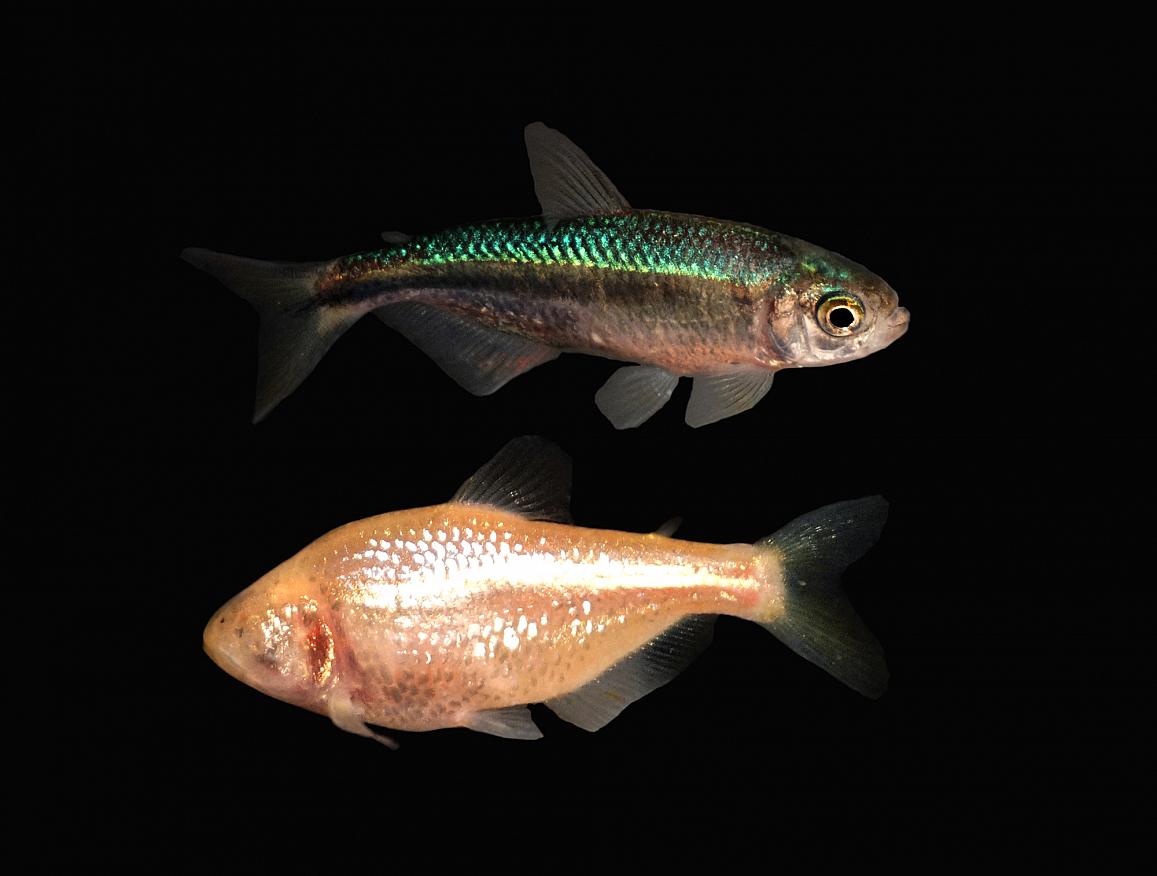IRP researchers identify how eye loss occurs in blind cavefish
Study yields potential clues to understanding eye disease and blindness in people
Loss of eye tissue in blind cavefish (Astyanax mexicanus), which occurs within a few days of their development, happens through epigenetic silencing of eye-related genes, according to a study led by the National Institutes of Health. Epigenetic regulation is a process where genes are turned off or on, typically in a reversible or temporary manner. This mechanism differs from genetic mutations, which are permanent changes in the DNA code. The study appears in Nature Ecology & Evolution.
“Subterranean animals provide a unique opportunity to study how animals thrive in extreme environments, some of which can mimic human disease conditions,” said Brant M. Weinstein, Ph.D., senior investigator at NIH’s Eunice Kennedy Shriver National Institute of Child Health and Human Development (NICHD) and one of the study authors. “Many of the cavefish genes identified in our study are also linked to human eye disorders, suggesting these genes are conserved across evolution and may be similarly regulated in people.”

Photographs of Astyanax mexicanus, surface form with eyes (top) and cave form without eyes (bottom).
This page was last updated on Friday, January 21, 2022